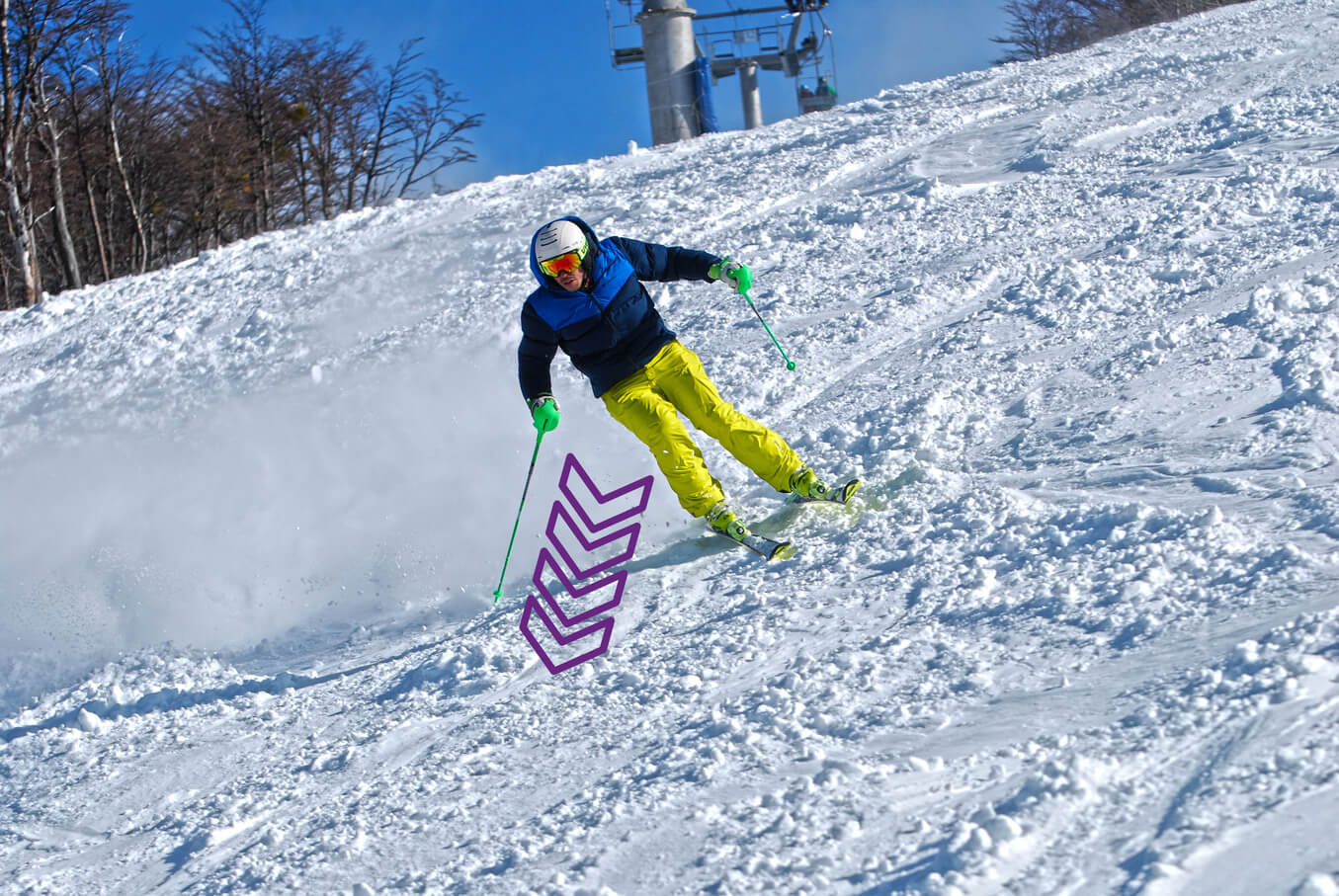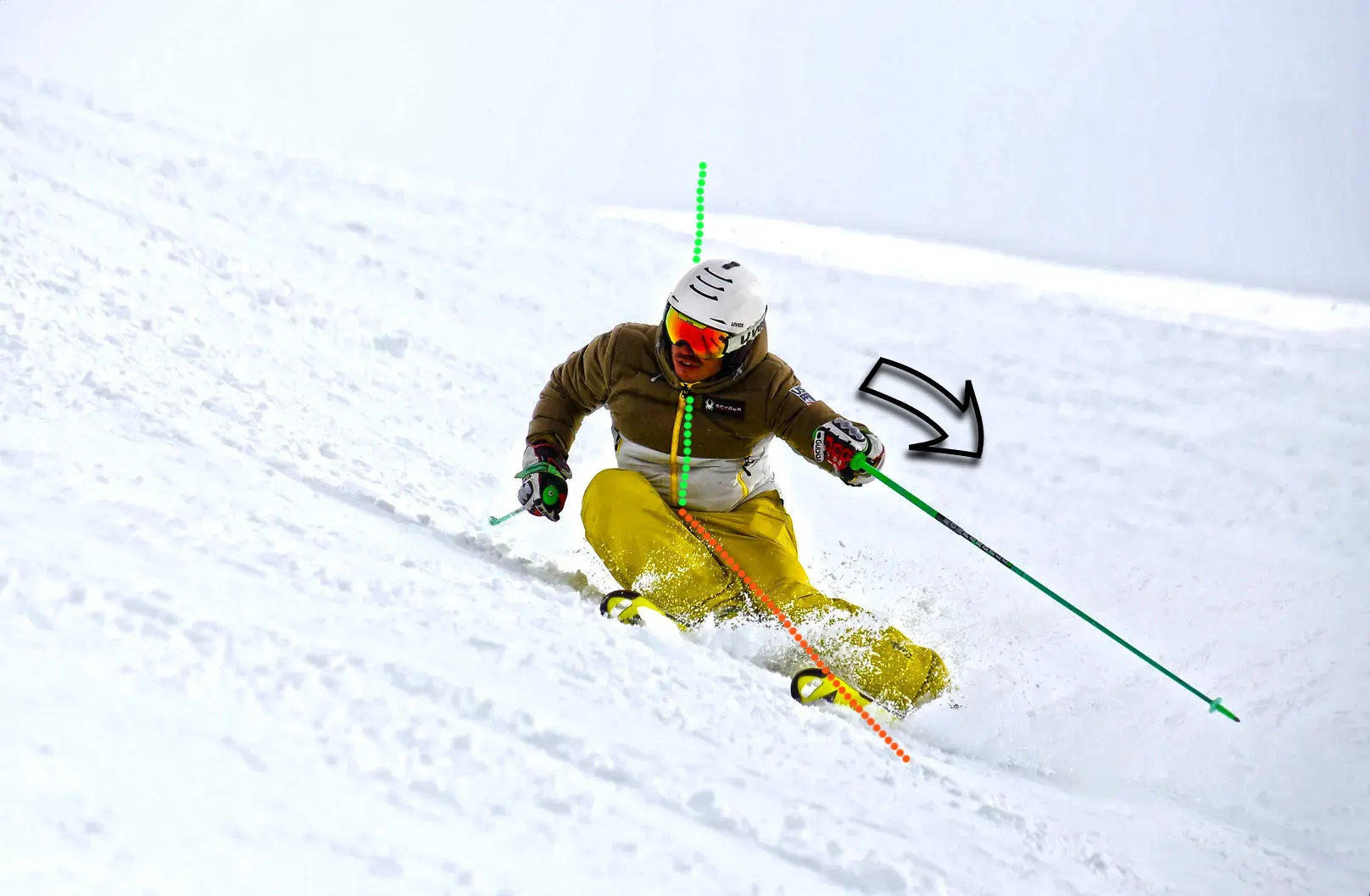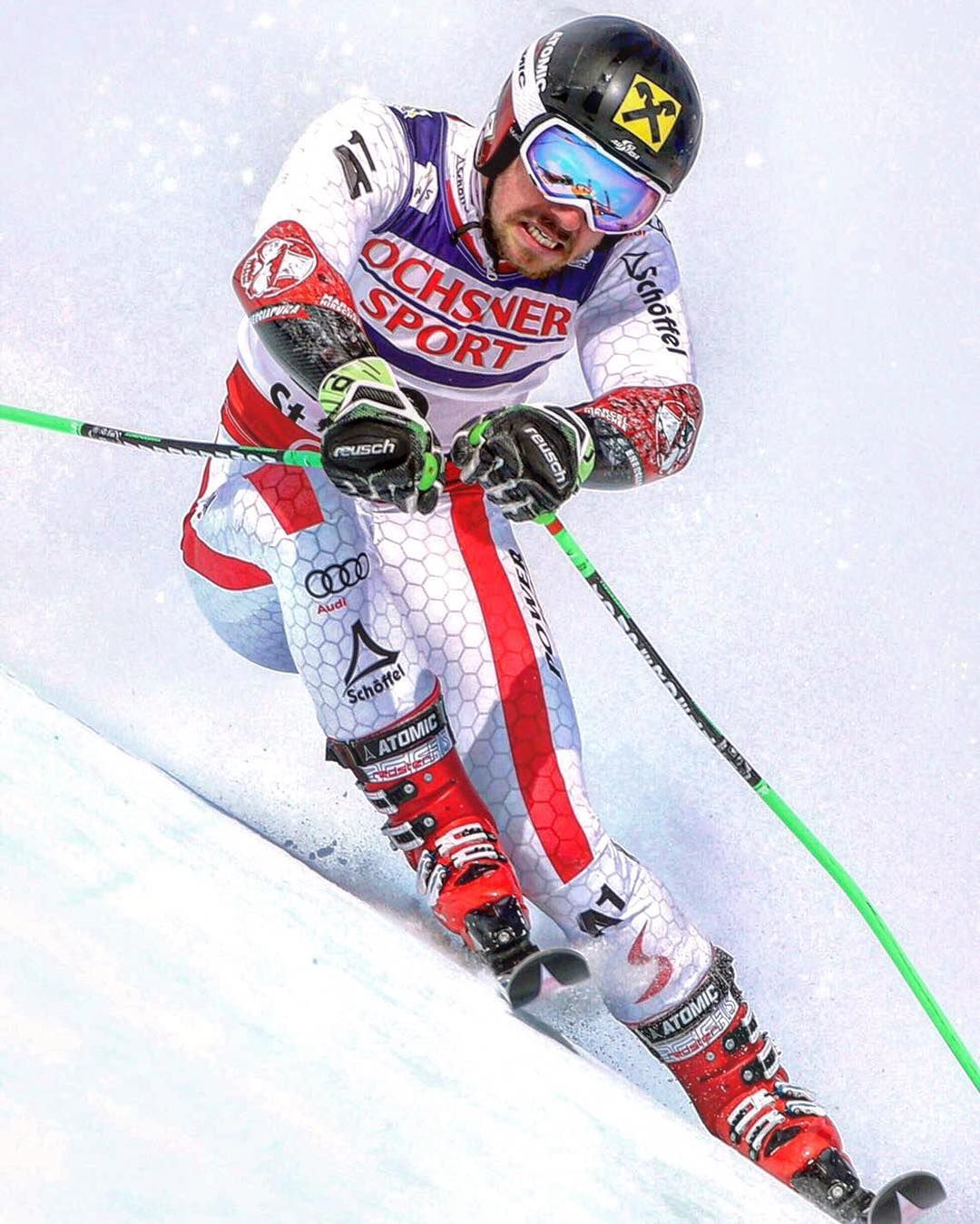Paradoxical [par-uh-dok-si-kuhl]: adj; Something that involves two facts or qualities which seem to contradict each other, or to be self-contradictory.
Skiing, unlike the majority of sports, is a super counterintuitive activity and we have to work against basic instincts (like self-preservation) to get better at it. Let’s deep dive into this quite revealing concept…
To make myself clear, let’s start with a direct example: in order to get pressure on the front part of the ski (tip/shovel) and successfully initiate a turn, we need to move our Center of Mass forward at the beginning (the high “C” part) of the turn. This means in the steeps, to “face the danger” or “dive into the abyss” at initiation.
And let’s be honest, leaning downhill or moving ourselves down the fall line on a steep slope goes against all common sense. It is definitely counterintuitive but mandatory for good skiing and/or even to ski in control.
And that’s where the paradoxical aspect kicks in. In skiing, actually to avoid crashing (and ultimately preserve your health) you have to perform movements that feel (at first) very risky to do on a steep slope. Movements that “initially” feel like against self-preservation instincts. But trust me, only at first…
So, the paradox would be that “in order to preserve my life while skiing, I need to do stuff that seems pretty unsafe or dangerous”. Particularly for the non-skier or even for the beginner and intermediate ones. However, in reality, those are actually the movements that are going to allow the skier to make controlled turns and thus ski safely down the mountain. A beautiful paradox… isn’t it?
That’s why (in my humble opinion) skiing seems that difficult when we start trying it, or even for the intermediate skiers. We try to follow our instincts when we try to slow down or turn, leading to an inexorable lack of stability and control.
Nevertheless, if we keep training and trying to improve our technique, we progress and reach a point in which our brain does a “click” and we realize that that’s actually the way to achieve control and consequently be safe on the slopes. When that “click” happens, our connection with the activity of skiing changes forever. It is a groundbreaking discovery, a game changer.
Once we do that “mental click” and start “winning the battle”, skiing becomes, for the most part, a not-so-difficult activity. It gets way safer, and way more enjoyable. Everything kind of falls into place…
But it is worth nothing to say that it takes quite some time for the brain to “trust” those (at first risky) movement patterns, and implement them regularly in our skiing. That part only comes with practice and repetition. So what at the beginning seems like going out of the comfort zone, then it actually produces an enlargement of that comfort area. And that is a huge leap into high-level skiing.
Now let’s describe two of these “counter-intuitive” and necessary movements:
1) Being forward at turn initiation: moving our Center of Mass forward (and down the valley) at the beginning of the turn. This is a key movement in order to load the tip/shovel of the new outside ski at initiation, and thus starting the turn correctly. Loading the tip of the outside ski at the beginning allows us to make those “Capital C letter” turn shapes, typical of advanced skiers. And actually the steeper it gets, the more forward we should move our center of mass in order to keep initiating on the tip of that ski.

In the image above, notice how I am crossing my Center of Mass forward and down the valley in order to initiate the next turn…
2) Upper body angulation to the outside of the turn: that means leaning the upper body down the valley during the second part of the turn (i.e. after the fall line). This movement is key in order to keep main balance over the outside ski. And it is a proven fact that changing direction with our balance over the outside leg/ski is the most stable and efficient way to turn. More so, the shorter the radius of the performed turn or the more slowly the carving, the greater the upper body angulation required to stay balanced over that outside ski throughout the curve. Take a look at the picture below…

Conclusion
As a matter of fact, beginners and even the majority of intermediate skiers tend to do quite the opposite of what they should. They tend to lean back and in while performing a turn. So one of the aspects that separate intermediate from advanced skiers is the presence of this non-instinctive kind of movements in their skiing. Actually, one of the “tickets” to advanced skiing is the performing of those counter-intuitive movements consistently.

Marcel Hirscher in the GS run of the FIS Alpine World Ski Championships in 2017 at Piz Nair in St. Moritz, Switzerland, showing a tremendous amount of upper body angulation to the outside of the turn. By the way, he won the gold medal on that race.
Keep ripping some arcs!


Your insight into the paradoxical aspect of skiing, where seemingly risky movements are the key to safety, is eye-opening. It reminds me of the importance of trusting the process.
W308384-09oct23 Fidelity 401k
Fede
Incredible article
So as you pointed out, the release of the old long/outside leg is the first action to move the COM (from pelvis up right?), down the fall line to initiate the turn, then we could say that at transition (when we put pressure on boots/fore aft), just “flexing new inside knee” will make all that happen, meaning phase 1 (being forward at initiation)?
Thanks
Thanks for the feedback Tito! You are very accurate. The “releasing” of the old support (old outside leg) through flexing of the outside knee and hip (thus shortening that leg), will trigger the crossing of the CM into the new turn. Regarding the fore-aft plane, look for that new outside (old inside) ankle flexion at that transition in order to engage the tip of the new support (old inside/new outside leg) from the very beginning. If you shorten the old outside leg before edge change, you are going to end up with the “very early new outside ski pressure” that elite athletes look for to perform every single time they turn… cheers from Argentina!
I remember many years ago when I was about 9, I was an intermediate and my Dad encouraged me to just point my skis down the fall line and embrace the speed. As you stated I was scared of the speed, scared of the steepness, scared to point my skis down the fall line. Always going back and forth across the hill before making my next turn. Just as you stated it there was that eureka moment when it happened, I pointed them down and I made the turn, and the next one and it got easier from then on. Some 55 years later, I ski fast, carve hard and keep those puppies on the fall line.
Hello Malcolm. Thank you very much for your comment. Your words really reflect what it feels like at the beginning of our journey as skiers. Being so counter-intuitive, skiing seems too difficult. But that’s just the first stage. When we manage to overcome those fears of the slope, everything changes drastically and that is where we really get to know skiing as a sport. That is the point. The previous stage is not skiing. But it is an inevitable stage. We all go through that at the beginning. The important thing is to keep trying until you overcome it and leave it behind. Skiing is very beautiful and very simple, but not everyone manages to really discover it. It is just a matter of commitment and constant work. Just keeping trying it. Sooner or later, you get it. Cheers from Argentina!
So summarizing the biomechanics of skiing, the more we lean forward our center of mass when we fall downhill, diving to the abyss and facing the danger, pressing shins against the front of boots or actually “resting” them, (especially the new outside-turning one) the more we “control” the speed of the turns and safer it gets, possibly aided by the hip flexing into that turn to get more edging and bending?
Yes Tito. Exactly. And as you say, more edging means more control as well. But, edging is not a counterintutive movement. It is quite intutive. Cheers from Argentina!
Would you comment on two things:
1. What movement moves the CoM “forward (and down the valley)? In my world I shorten the new inside leg. This is a drastically simplified description, but it can work even though it leaves out other accompanying movements that are somewhat necessary. There are many ways of conceptualizing or describing “shortening the new inside leg.” So many, and they all mean pretty much the same thing. But what do you use in your teaching?
2. When does one need to do this movement? In my world it’s before the turn starts, because this leg movement starts the turn all by itself. It constitutes a release. Do you teach something similar? What words do you use that you’ve found convey the idea succinctly?
Thank you for your comment.
1. Yes, shortening, flexing or releasing the old outside leg (new inside leg) produces the CoM to cross forward and down the valley.
2. I teach that movement as the very first movement to start a new turn. The releasing of the old outside support. Teaching the releasing or unloading of the old outside leg as the very first thing to start a new turn is key to get new outside ski pressure/balance at the very begining of the turn. Flexing the old outside (long) leg is key for efficient skiing. Cheers from Argentina!